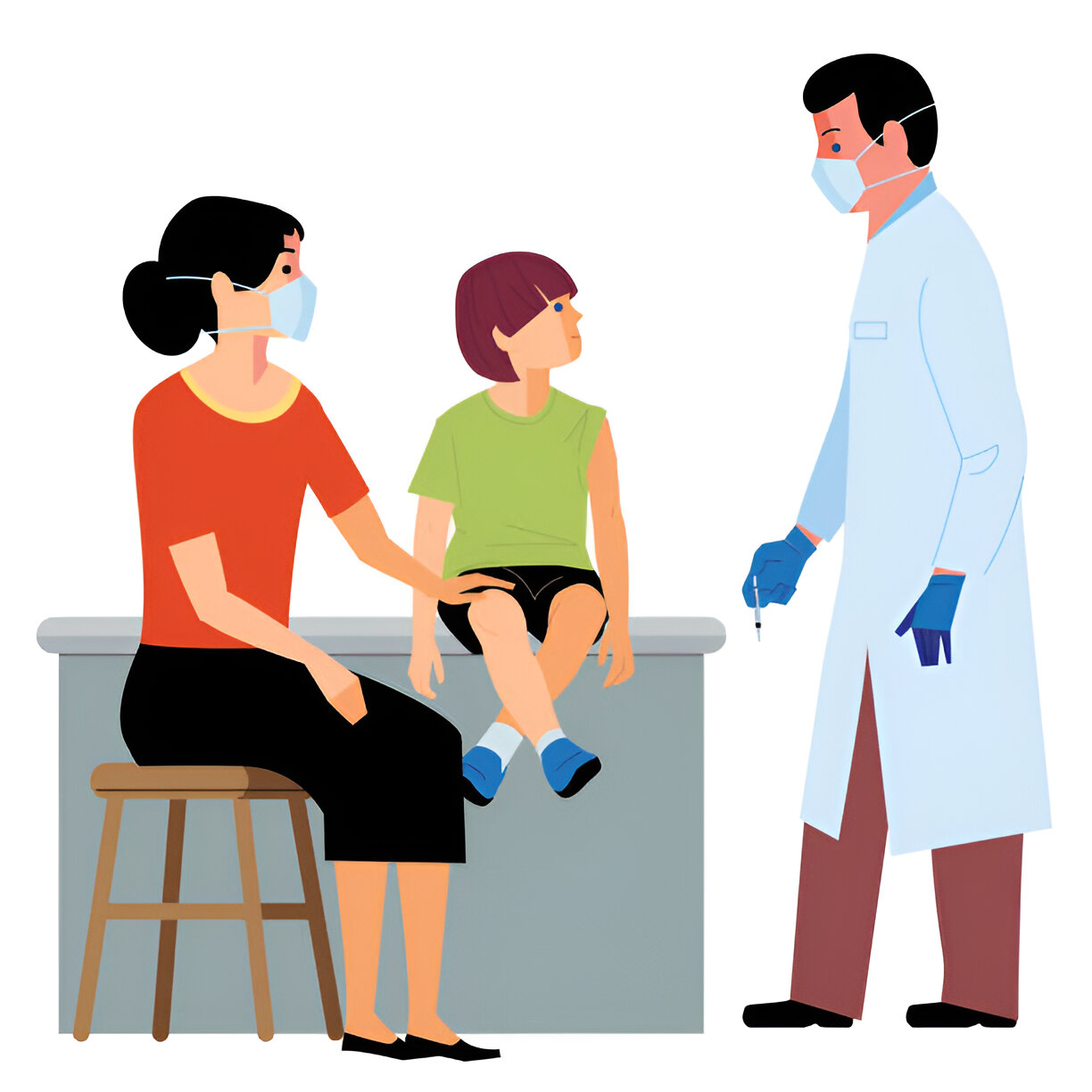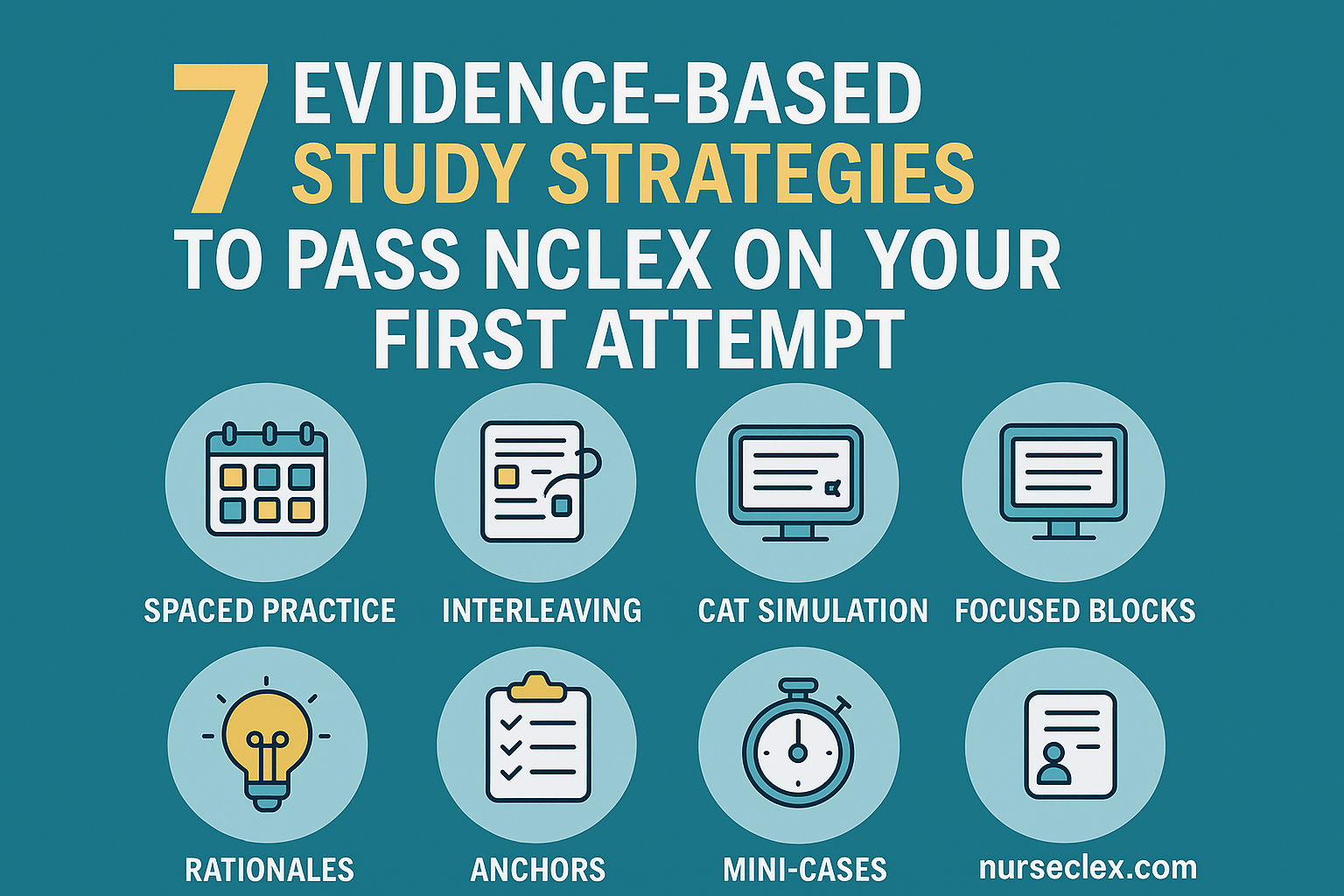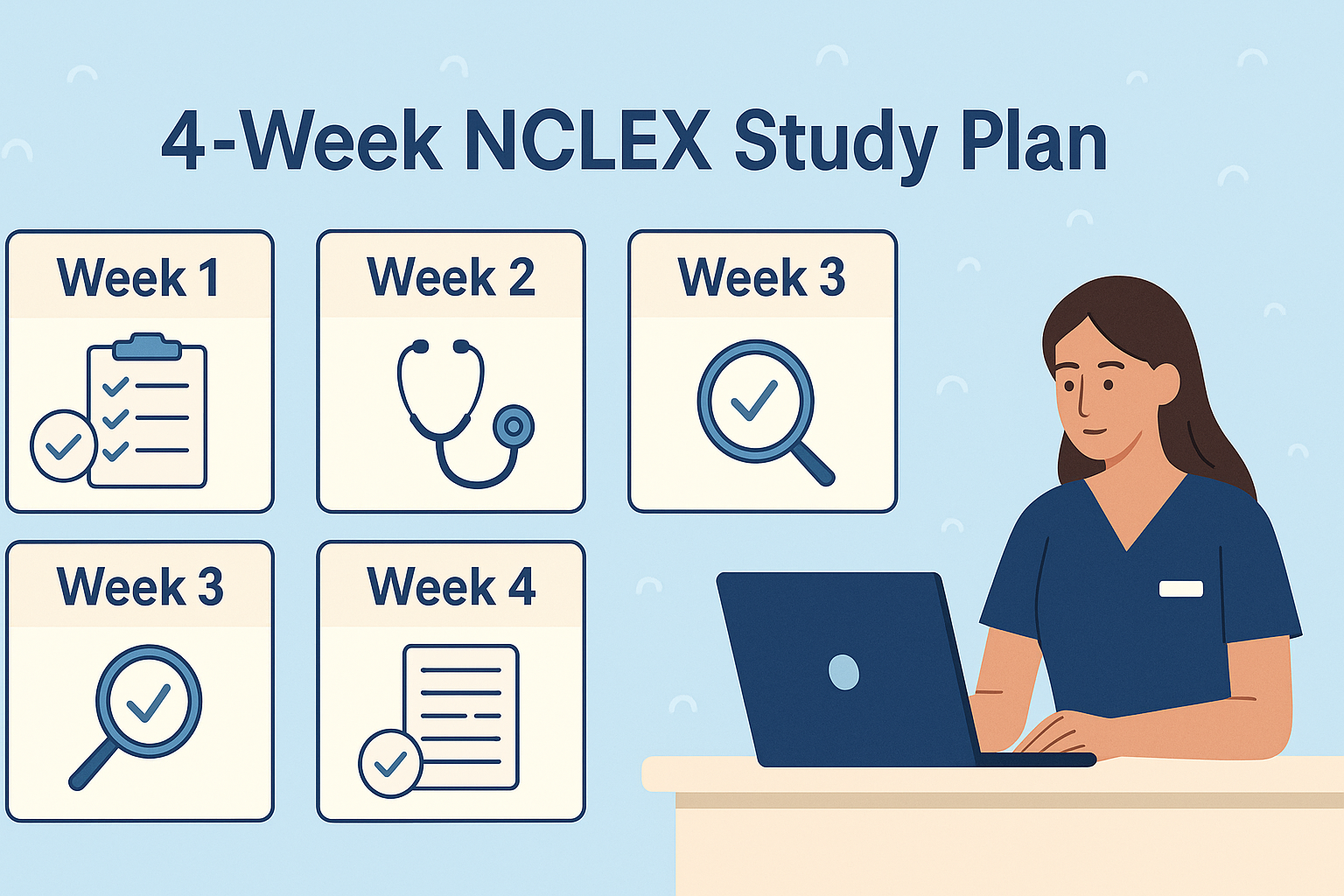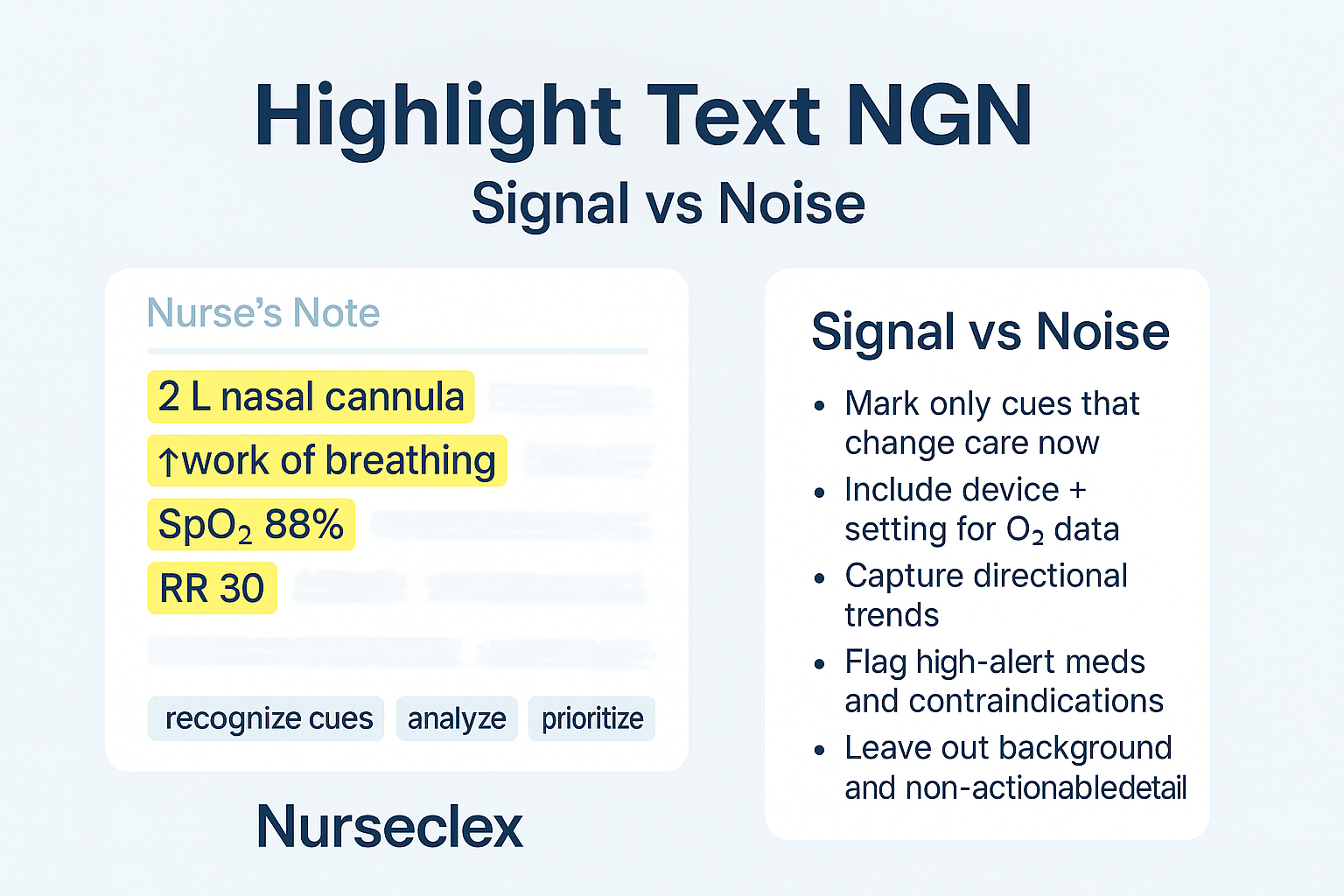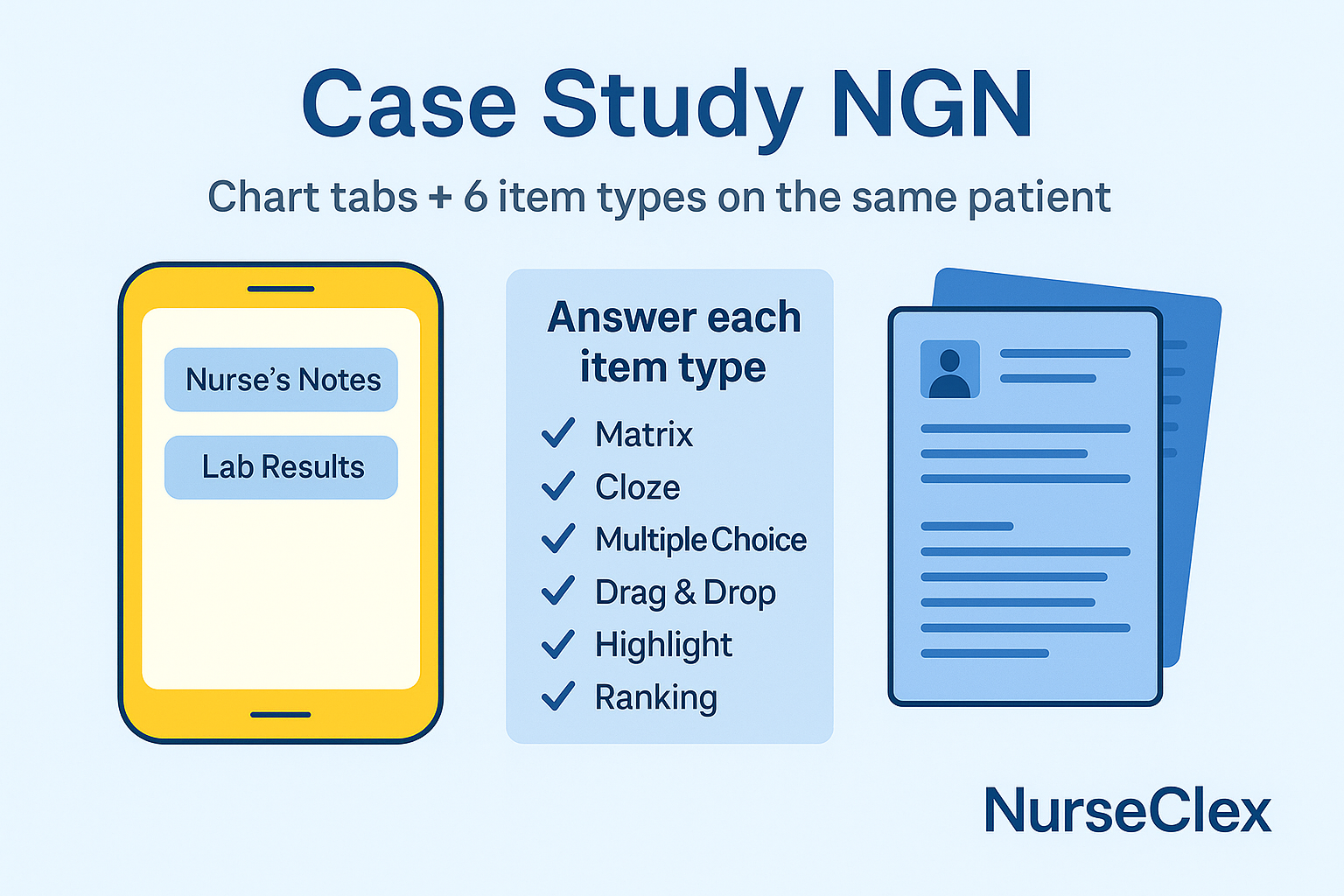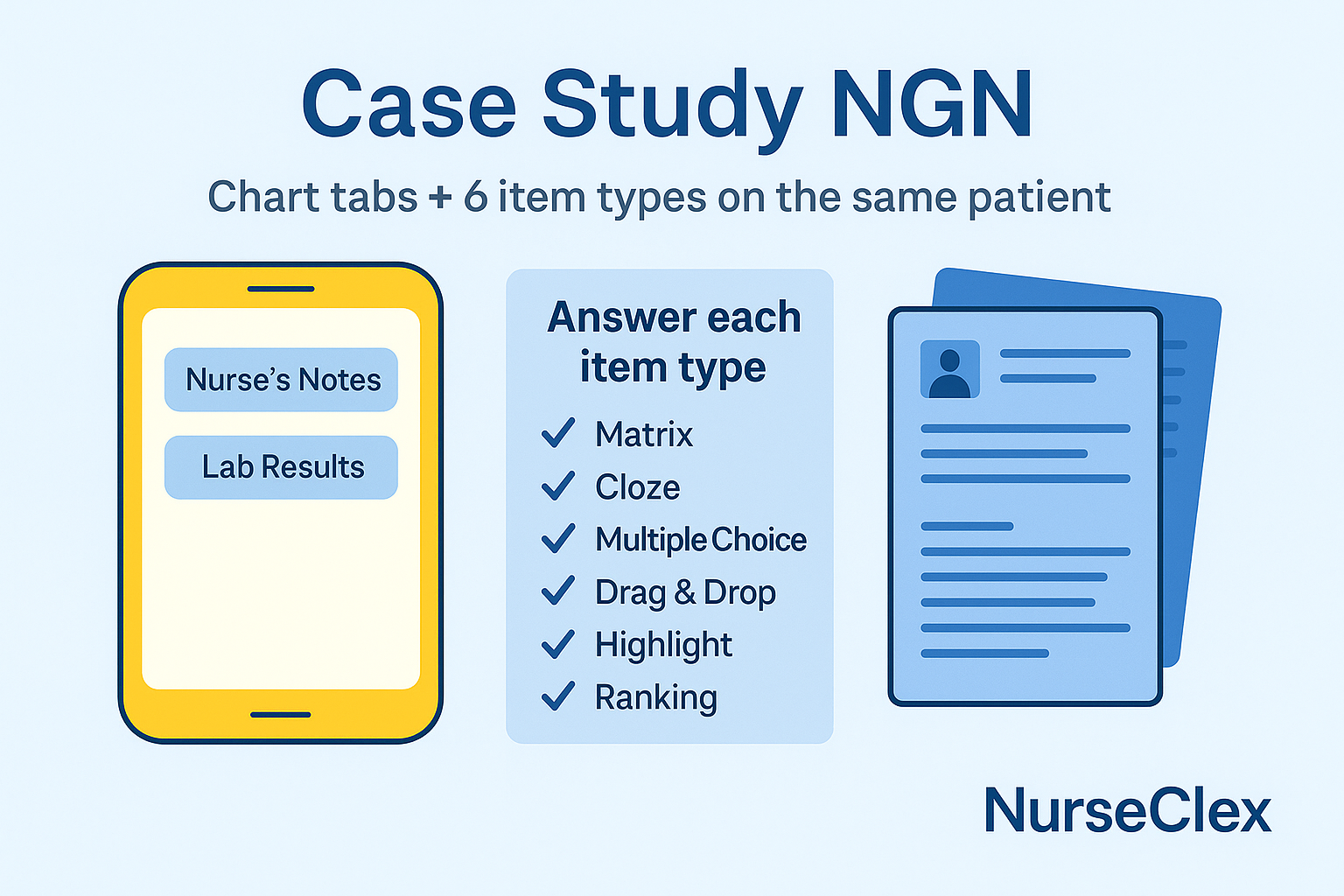Ace pediatric growth, development, immunizations, and key nursing interventions for NCLEX success.
For quick test strategy tips, start with the NCLEX Fundamentals Guide.
???? What You’ll Master
In this NCLEX pediatric nursing guide, you’ll review:
-
Growth and development milestones by age
-
Pediatric medication safety and dosage calculations
-
Common childhood illnesses and emergency priorities
-
Immunization schedules and contraindications
-
Family-centered care principles
Pair this with the NCLEX Pharmacology Exam Guide for medication accuracy and safety.
???? Growth and Development by Age Group
Infants (0–12 Months)
-
0–3 months: lifts head when prone, follows objects, social smile (2–3 mo)
-
3–6 months: rolls over, sits with support, babbles, reaches for toys
-
6–12 months: sits unsupported, crawls, pulls to stand, says first words
Birth weight doubles by 6 months and triples by 12 months.
Safety Tips
Always place infants on their back to sleep as advised in the CDC Safe Sleep guidelines. Avoid small objects that pose choking hazards and never leave babies unattended on high surfaces.
Stranger anxiety peaks at eight to nine months; separation anxiety starts around six months. You can compare milestones through the American Academy of Pediatrics.
Toddlers (1–3 Years)
Walks by 12–15 months, runs and climbs by two years, and is usually ready for toilet training by three. Vocabulary grows rapidly; tantrums and the word “no” become common.
Keep cabinets locked, supervise near water, and follow safety advice from Poison Control (1-800-222-1222). Use short, clear phrases, offer choices, and allow comfort objects during care. More strategies are shared in Therapeutic Communication for NCLEX.
Preschoolers (3–5 Years)
Rides a tricycle, hops, and skips. Magical thinking and imagination dominate learning at this stage.
Teach fire safety (“stop, drop, and roll”), stranger safety, and the importance of helmets. Play therapy helps explain procedures. For developmental insights, see HealthyChildren.org
.
School-Age Children (6–12 Years)
Grows about two inches and gains 4–7 lbs per year. Permanent teeth erupt around age six. Thinking becomes logical and rule-oriented, with Erikson’s stage of industry versus inferiority shaping behavior.
Include the child in care decisions, answer questions honestly, and respect privacy. Strengthen study habits using the NCLEX Study Plan.
For general growth information, review the CDC parenting tips for school-age children.
Adolescents (13–18 Years)
Puberty brings rapid changes in growth and mood. Teens seek independence and form identity through peer relationships.
Encourage privacy, screen for risky behaviors, and support healthy self-image. Guidance on teen development is available through the CDC resource for adolescents.
???? Pediatric Immunizations (High-Yield)
| Age | Vaccines |
|---|---|
| Birth–2 mo | Hep B (birth, 1–2 mo); Vitamin K at birth |
| 2 mo | DTaP, IPV, Hib, PCV13, Rotavirus |
| 4 mo | Repeat 2-month series |
| 6 mo | Repeat series + Influenza (≥ 6 mo) |
| 12–15 mo | MMR, Varicella, Hib final, PCV13 final |
| 15–18 mo | DTaP (4th dose) |
| 4–6 yr | DTaP, IPV, MMR, Varicella |
| 11–12 yr | Tdap, HPV (2–3 doses), MenACWY |
Avoid live vaccines for children who are immunocompromised, pregnant, or recently received blood products. Always confirm allergies and keep epinephrine ready.
More details are outlined in the CDC Immunization Schedule, and additional nursing resources are available in the Pediatric Immunization Cheatsheet and Infection Control for NCLEX.
???? Common Pediatric Conditions
Croup (Laryngotracheobronchitis)
Barking cough, inspiratory stridor, and nighttime worsening. Use cool mist, corticosteroids such as dexamethasone, and racemic epinephrine if needed.
For more clinical guidance, review Mayo Clinic’s overview of croup.
Epiglottitis
High fever, drooling, tripod posture, and muffled voice signal an emergency. Do not examine the throat; prepare for intubation and start IV antibiotics such as ceftriaxone. See the Pediatric Emergency Quick Guide or MedlinePlus for detailed management steps.
Bronchiolitis (RSV)
Wheezing, congestion, poor feeding, and tachypnea are common. Provide oxygen, hydration, and suctioning, and maintain contact isolation.
The RSV Nursing Care Plan and NIH information on RSV offer evidence-based management tips.
Pyloric Stenosis
Projectile vomiting and an “olive-shaped” mass are classic signs. Keep the child NPO before surgery, monitor fluids, and restart feeds gradually. Learn more in Fluid & Electrolytes for NCLEX.
Intussusception
Sudden pain, currant jelly stool, and a palpable mass may appear. Keep the child NPO, begin IV hydration, and prepare for an air or contrast enema.
Review clinical background from the Cleveland Clinic guide to intussusception.
???? Medication Safety and Calculations
Use weight-based dosing (mg/kg) for all pediatric medications. Double-check high-alert medications and verify with another nurse before administration.
Sharpen your skills with the Pediatric Dosage Calculations Guide and the NCLEX Pharmacology Review.
For safety standards, consult the FDA medication safety guidance for children.
???????????? Family-Centered Care
Parents are vital members of the care team.
Encourage questions, respect cultural differences, and tailor education to health-literacy levels.
Follow the ANA Code of Ethics and review principles in Ethical & Legal Nursing Care.
???? Keep Learning and Practice
Continue mastering pediatric content with:
Explore official updates through the NCSBN NCLEX resources.
